Buy Cabbage Seeds from various brands at DesiKheti:
Buy Advanta Cabbage Seeds Online
Buy Agroisia Cabbage Seeds Online
Buy Bejo Cabbage Seeds Online
Buy East West Cabbage Seeds Online
Buy Elite Seeds Cabbage Seeds Online
Buy Enza Zaden Cabbage Seeds Online
Buy HM Clause Cabbage Seeds Online
Buy Indo American Seeds Cabbage Seeds Online
Buy Indus Seeds Cabbage Seeds Online
Buy JK Seeds Cabbage Seeds Online
Buy Kalash Cabbage Seeds Online
Buy Kaveri Seeds Cabbage Seeds Online
Buy Known You Cabbage Seeds Online
Buy Konico Seeds Cabbage Seeds Online
Buy Namdhari Seeds Cabbage Seeds Online
Buy Nath Seeds Cabbage Seeds Online
Buy Noble Seeds Cabbage Seeds Online
Buy Nongwoo Cabbage Seeds Online
Buy BASF Nunhems Cabbage Seeds Online
Buy Nuziveedu Seeds Cabbage Seeds Online
Buy Pan Seeds Cabbage Seeds Online
Buy Rasi Seeds Cabbage Seeds Online
Buy Sakata Cabbage Seeds Online
Buy Seminis Cabbage Seeds Online
Buy Sungro Seeds Cabbage Seeds Online
Buy Syngenta Cabbage Seeds Online
Buy Takii Seed Cabbage Seeds Online
Buy Tokita Cabbage Seeds Online
Buy Unisem CabbageSeeds Online
Buy Welcome Seeds Cabbage Seeds Online
Cabbage is a popular cool-season crop. The main feature of Cabbage that is consumed is its dense, green head. Cabbage is scientifically known as Brassica oleracea var. capitata Linn. Cabbage is a member of the Cruciferae family.
"Patta Gobhi" is the common name for this multipurpose vegetable in India. Other common Indian names for Cabbage are Kobi, Bandhakopi, Bandha Kobi, Ele Kosu, Bandh gobi and Muttaikos. Its origins trace back to a wild, non-heading plant known as wild cliff cabbage or Brassica oleracea var. sylvestris.
Cabbage is a staple in many kitchens worldwide. Patta gobhi can be eaten fresh in salads, cooked in a variety of recipes, or fermented to make pickles like sauerkraut. Cabbage is a nutritional powerhouse since it is full of important minerals, including calcium, iron, magnesium, salt, potassium, and phosphorus. Patta gobhi is also a good source of vitamin C and has 1.3% protein, which includes all the important amino acids, especially those high in sulphur.
In addition to its culinary use, Cabbage is significant in Ayurvedic treatment. Patta gobhi leaves have long been used to cure various illnesses, including haemorrhoids, peptic ulcers, skin disorders, fevers, and coughs. Cabbage is also known to possess anti-cancer effects.
The production of Cabbage is dominated by China worldwide, with India coming in second. West Bengal is India's leading state for Patta gobhi production, accounting for 24.38% of the country's total Patta gobhi production in 2021–2022. Odisha, Gujarat, Madhya Pradesh, and Assam are among the other major states that produce Patta gobhi.
Classification of Cabbage
Cabbage can be classified into various categories based on origin, colour, head shape, and other characteristics:
Based on Place of Origin:
- Mediterranean Cabbage (B. oleracea var. capitata ssp. mediterranea): This Cabbage is indigenous to the Mediterranean area.
- Oriental Cabbage (B. oleracea var. capitata ssp. orientalis): This Cabbage has Oriental origins.
- European Cabbage (B. oleracea var. capitata ssp. europaea): This Cabbage is widespread throughout Europe.
Based on Botanical Color:
- White Cabbage: This is the most prevalent kind of Cabbage. This Cabbage has light green leaves.
- Red Cabbage: This Cabbage is well-known for its anthocyanin-rich, deeply purple or red leaves.
Based on Head Shape:
- Round or Ball-Head Type: This variant of Cabbage is spherical in shape and compact. Mammoth Rock Red, Copenhagen Market, Pride of India, and Golden Acre are a few examples.
- Flat or Drumhead Type: This Cabbage is Characterized by a flattened shape. Examples include Pusa Drum Head.
- Conical-Head Type: This Cabbage is distinguished by its slender, cone-shaped form. One example is Jersey Wakefield.
- Savoy Type: This Cabbage has wrinkled or crinkled leaves. One example is Chieftain.
Based on the Size and Shape of the Head:
- Wakefield and Winningstadt Group: These Cabbages develop early and have small, conical heads. Charleston Wakefield and Jersey Wakefield are two examples.
- Copenhagen Market Group: These Cabbages are Known for their huge, spherical heads that mature early. A few examples are Copenhagen Market, Golden Drumhead, Globe, and Bonanza.
- Flat Head or Drumhead Group: The heads of these Cabbages are characterized by a flattened shape. Pusa Drum Head, Early Round Dutch, All Head Early, Succession, and All Seasons are a few examples.
- Savoy Group: Though these Cabbages are not commonly grown commercially, they are well-known for their wrinkly leaves and excellent heads. Chieftain, Improved American Savoy, and Drum Head Savoy are a few examples.
- Danish Ball Head Group: These cabbages have thin leaves and compact, solid heads with good storage quality. Wisconsin Ball Head, Hollander, and Danish Ball Head are a few examples.
- Alpha Group: The earliest maturing group, with very small, solid heads. They have limited commercial use. Miniature Marrow is one such example.
- Volga Group: These Cabbages feature loose-bottomed, thick, glossy blue leaves. Volga is one instance.
- Red Cabbage Group: These Cabbages are like the Danish Ball Head group but have red leaves that distinguish them. Big Red, Red Dutch, and Red Rock are a few examples.
Bailey's (1930) Classification of Cultivated Oleracea into 7 Divisions:
The Leaf Races Grown for Open Foliage:
- Branching Shrubby Kales: B. oleracea var. fruticosa
- Common Biennial, Mostly Unbranching Kales: B. oleracea var. acephala
- Low, Cabbage-like Portuguese Kales: B. oleracea var. tronchuda
B. The Head Races Grown for Compact Leaf Heads or Buds:
- Cabbage: B. oleracea var. capitata - Known for its edible terminal head.
- Brussels Sprouts: B. oleracea var. gemmifera - Grown for its edible lateral small heads or buds.
C. The Inflorescence Races Grown for Modified Flower Shoots or Malformed Flowers:
- Broccoli: B. oleracea var. italica - The flowers are only partially modified.
- Cauliflower: B. oleracea var. botrytis - The blossoms are twisted and thickened into a single or several heads.
Climate for Patta gobhi Farming
Although it may grow in many different types of environments, Cabbage prefers a chilly, damp atmosphere. The ideal temperature range for Patta gobhi head formation and growth of Kobi is between 15°C and 20°C. Most kinds of Patta gobhi tend to slow down or cease growing when temperatures increase above 25°C.
Although Patta gobhi can withstand severe cold and frost, it becomes bland in hot, dry conditions. Patta gobhi grows best at a minimum temperature of a little over 0°C. Growing Patta gobhi in a wider range of temperatures is now possible because of Japan's recent discovery of heat-tolerant Kobi types. Even at typical temperatures of 25°C, these Cabbage cultivars can form tight heads.
Additionally, in tropical locations like East, South, and Western India, where daily temperatures range from 30°C to 35°C, imported hot-weather Cabbage hybrids like Green Boy and Green Express have successfully formed compact heads.
Soil for Kobi Cultivation
Bandhakopi can be grown in various soil types, from sandy to heavy soils. Early-maturing types of Patta gobhi flourish in lighter soils like sandy loams, whereas later-maturing Kobi cultivars perform better in heavier soils like clay loams. However, well-drained soils are crucial for achieving higher yields, as waterlogged soils following heavy rain or irrigation are unsuitable for Kobi cultivation.
For Cabbage, Optimal soil pH should be between 6.0 and 6.5. Although most Bandhakopi cultivars grow on salty soils, they are more prone to disease in these environments. Symptoms of saline stress in Patta gobhi plants include die-back of leaf margins, dark foliage, and increased susceptibility to diseases like blackleg.
Land Preparation for Bandhakopi Farming
A successful Bandhakopi crop requires careful site preparation. Before planting the Kobi seedlings, the soil needs to be fine-tilled four or five times. Level the soil with a plank for even planting. During the final ploughing, it's beneficial to incorporate 25 tonnes of farmyard manure (FYM) per hectare to enhance soil fertility and structure.
Cabbage Seeds and Propagation Material
Selecting the Right Cabbage Variety: Selecting the ideal Bandha Kobi variety is essential and should be based on your unique requirements, such as the intended use, the demand in your local market, the climate, the kind of soil, the irrigation that is available, and the frequency of pests and diseases in your area.
Procuring Cabbage Seeds: Purchase your Cabbage seeds only from reputable and verified vendors. Desikheti provides a large assortment of premium cabbage seeds that can conveniently be delivered to your doorstep.
Cabbage Seed Rate: Use 100 to 120 grams of Cabbage seeds per acre for optimal results.
Cabbage Seed Treatment: Hybrid and open-pollinated (OP) Cabbage seeds from private companies often come pre-treated with chemicals. In order to prevent Patta gobhi seed-borne illnesses, untreated Patta gobhi seeds should be treated with a fungicide such as Thiram, Cerasan, Agrosan, or Bavistin at a rate of 2 grams per kilogram.
Time of Sowing Cabbage Seeds
The best time to plant Cabbage seeds in India varies according to local conditions. Kobi seeds are usually sown in high-altitude regions between May and June for a summer or autumn crop. In the northern plains, the sowing of Kobi seeds starts in August, either directly in the field or in Cabbage seed beds.
Cabbage seeds are typically sown between May and June for a summer or autumn harvest in high-altitude areas. In the southern hills, the sowing of Bandhakopi seeds is often delayed. Bandha Kobi plants can be grown nearly year-round in the western and southern peninsulas by choosing the appropriate cultivars or hybrids.
Method of Sowing Cabbage Seeds
Bandha Kobi is generally grown by transplanting. Start by planting Cabbage seeds in a nursery bed that has been adequately prepared. Ensure the soil is finely tilled and free of diseases. Add two to three kilograms of well-rotted farmyard manure per square metre to the soil. Bandha Kobi Seeds are sown in raised beds, typically measuring 300 cm x 100 cm x 15 cm. In these beds, sow Cabbage seeds in rows, maintaining a spacing of 10 cm between rows and a depth of 1.5-2.5 cm. After sowing Patta gobhi seeds, cover them with a thin layer of fine manure and soil.
To retain moisture, cover the Cabbage seed sown beds with dry grass and keep the soil continually damp. Mulch may be required in lowland regions to shield Bandha Kobi seedlings from heavy rain, while glass frames or polytunnels might offer the best-growing conditions in high-altitude settings. For mid-season or late Bandha Kobi cultivars, open bed growing is usually sufficient.
Bandha Kobi seedlings are generally ready for transplanting at 4-6 weeks old, though they can be transplanted up to 8 weeks if needed. The transplanting time depends on the climate: in plains, transplanting typically occurs from August to December, while in hilly regions, it is done from April to August.
Spacing Recommendations for Planting Cabbage Seedlings:
- Early-Maturing Cultivars: Space plants 45 cm x 45 cm or 60 cm x 30 cm apart.
- Mid-Season Cultivars: Space plants 60 cm x 45 cm apart.
- Late-Maturing Cultivars: Space plants 60 cm x 60 cm apart.
Depending on the soil and climate, Bandha Kobi seedlings can be planted in flat beds or with ridges and furrows. The ridge method is especially useful for early sowing in areas with rainfall during sowing Cabbage seeds. In saline soils, planting in furrows is preferred.
Compared to transplanting, heads form around 25 days earlier with direct seeding. Sow two Cabbage seeds per hill at 60 cm x 30 cm spacing and thin the plants when they reach 10 to 12 cm in height.
Nutrient Management for Bandha Kobi Farming
In order to maximise yield and achieve robust Kobi development, effective nutrient management is essential. The amount of nutrients that Kobi needs depends on several variables, such as soil fertility, soil type, Kobi variety, and local conditions.
In general, Kobi requires 60–75 kilograms of potassium (K), 75–80 kg of phosphorus (P), and 120–180 kg of nitrogen (N) per acre. Apply half of the recommended nitrogen and full doses of potassium and phosphorus when transplanting Patta gobhi seedlings. The remaining nitrogen should be administered 30 to 45 days after transplanting Kobi seedlings to ensure continued plant development.
Use urea, potassium sulphate, and single super phosphate in a 1:1:2 starter solution to improve early growth and increase Bandhakopi yields by up to 0.25 tons per hectare. Apply this solution twice: immediately after transplanting Patta gobhi seedlings and again 15 days later. Furthermore, one to two months after transplanting, foliar sprays of cobalt and molybdenum can further increase Kobi head size.
Irrigation Management for Patta Gobhi Cultivation
Due to its extreme sensitivity to soil moisture, Bandhakopi requires regular irrigation to grow and yield at its best. As soon as possible after transplanting Kobi seedlings, begin irrigating them to aid in their establishment. Follow up with irrigation every 10-15 days, depending on seasonal conditions and soil moisture levels.
For equal water distribution to the Bandhakopi roots, use the furrow irrigation technique. However, avoid heavy irrigation once Bandha Kobi heads have formed, as excess moisture can cause splitting.
Throughout the Patta gobhi growing season, maintaining the right amount of soil moisture is essential to promoting healthy plant development and maximising yields.
Weed Management for Cabbage Farming
In order to keep Bandhakopi plants healthy and to avoid competition for water and nutrients, effective weed control is necessary. Implementing routine weed management measures, such as two to three hand weeding sessions, is imperative. Since the roots of Bandha Kobi are shallow, you can eliminate weeds without hurting the Kobi plant by using shallow hoeing. Frequent hoeing enhances root aeration while simultaneously reducing weed growth.
The first 30 to 50 days following transplanting of Bandhakopi plants are the most crucial for controlling weeds. Earthing up is particularly necessary during wet months to reduce Kobi root exposure after showers.
Earthing should be performed 4-5 weeks after transplanting Patta gobhi plants to ensure healthy root development. In medium-heavy and clay soils, breaking crust formation is crucial to enhance water and air penetration. Additionally, using black polyethene mulch can effectively control weeds and help conserve soil moisture, leading to better overall plant health and Kobi productivity.
Pest and Disease Management for Cabbage Farming
Common Pests of Cabbage
Cabbage Leaf Webber (Crocidolomia binotalis)
- The cabbage leaf webber is a notorious pest that forms webs by binding Kobi leaves together and feeding on them. This caterpillar damage results in webbed leaves covered with faecal matter and skeletonized Kobi foliage.
- It can also affect Patta gobhi flower heads, leading to the rotting of the Kobi heads due to their gregarious feeding behaviour.
Mustard Sawfly (Athalia lugens proxima)
- The mustard sawfly targets young Bandhakopi seedlings with its blackish caterpillars. These caterpillars feed on the Bandhakopi leaves, causing them to curl and eventually fall off when touched.
- This pest is particularly problematic in the early stages of Kobi plant growth.
Cabbage Aphids (Brevicoryne brassicae)
- Cabbage aphids are common in colder seasons and infest cruciferous plants, including Patta gobhi. Both nymphs and adults suck sap from the Kobi plants, leading to reduced vigour and stunted Bandhakopi plant growth.
- The excretion of honeydew by aphids can result in sooty mold, which impairs photosynthesis. Severe infestations can cause Patta gobhi plants to dry up completely.
Diamondback Moth (Plutella xylostella)
- Diamondback moth caterpillars damage Kobi by feeding on the epidermal layer of leaves, creating white patches. As they mature, they feed on the undersides of Kobi leaves, causing holes and a withered appearance.
- Heavy infestations lead to skeletonized Kobi leaves, rendering the crop unsuitable for the market. This pest is more problematic during dry seasons.
Cabbage Borer (Hellula undalis)
- The cabbage borer caterpillars create webs on leaves and bore into the stem, stalk, or leaf veins. They can also infest the Kobi head, making it unfit for consumption.
- Damage includes webbed leaves, holes in the Patta gobhi head, and faecal matter. This pest prevents proper Bandhakopi head formation, leading to multiple shoots or heads.
Cabbage Butterfly (Pieris brassicae)
- The cabbage butterfly caterpillars are initially gregarious but disperse as they grow. They cause significant damage by skeletonizing leaves and boring into Patta gobhi heads.
- Severe infestations can lead to complete defoliation in Kobi plants and substantial yield losses.
Painted Bug (Bagrada cruciferarum)
- Both adult and nymph-painted bugs feed on Kobi plant sap, causing wilting and reduced vigour.
- This pest impairs normal growth in Kobi plants and can lead to significant damage if not managed promptly.
Tobacco Caterpillar (Spodoptera litura)
- Tobacco caterpillars, active at night, cause extensive damage by feeding on Kobi leaves and fresh growth.
- Young caterpillars are gregarious and skeletonize tender Bandhakopi leaves, while older caterpillars completely consume broad leaves.
Cabbage Semilooper (Trichoplusia ni)
- Cabbage semi-looper caterpillars initially scrape and feed on leaves, later defoliating entire Patta gobhi plants and leaving only the midribs and main veins.
- Damage is more severe in nurseries than in main fields.
Cabbage Flea Beetle (Phyllotreta cruciferae)
- Cabbage flea beetles damage plants by feeding on roots and leaves.
- The larvae feed on roots in the soil, while adult beetles create round holes in the Kobi leaves. This leads to dry old Bandhakopi leaves and unfit young leaves. Infested plants may emit a decaying odour.
Cutworm (Agrotis segetum)
Cutworm caterpillars cause damage by cutting Bandhakopi seedlings at ground level, sometimes requiring replanting. They are particularly problematic during early plant development.
Common Diseases of Cabbage
Downy Mildew (Peronospora parasitica)
- Downy mildew primarily affects young Kobi plants and can also be problematic during the Bandha Kobi seed production stage, especially in high-humidity regions like northern India.
- This disease causes purplish or yellow-brown spots on the upper Patta gobhi leaf surfaces, while the lower surfaces show a fluffy, downy fungal growth.
- Severe infestations can lead to plant death and expose Kobi heads to soft rot.
Wire Stem (Rhizoctonia solani)
- Wire stem disease causes soft, water-soaked lesions on the Bandhakopi stem near the soil level. As the disease progresses, cotyledons wither, and the Bandhakopi plant may collapse.
- Infected Kobi plants later show discolouration, becoming hard, woody, and thinner as the cortical tissue dies. This condition impairs Bandha Kobi plant stability and growth.
Alternaria Leaf Spot (Alternaria brassicola, A. brassicae, A. raphani)
- Alternaria leaf spot is characterized by small, dark-coloured spots that rapidly expand into circular lesions up to 1 cm in diameter. These lesions can merge, giving the Patta gobhi plant a blighted appearance.
- In older Kobi plants, the disease affects leaves, petioles, and stems, leading to damage to Bandhakopi heads during maturity and seed production.
Cabbage Yellows / Fusarium Wilt (Fusarium oxysporum f. sp. conglutinans)
- Cabbage yellows primarily affect Kobi seedlings, but symptoms often become visible 2 to 4 weeks after transplanting.
- Warm weather conditions promote disease development, which starts with a yellowish-green discolouration on one side of the Cabbage plant. This is followed by warping or curling of stems and leaves.
- Lower Kobi leaves turn yellow, brown, and brittle over time.
Black Leg (Phoma lingam)
- Black leg disease is prevalent in areas with rainfall during the Kobi growing season.
- The fungus can be transmitted through Bandhakopi seeds and infect Patta gobhi plants at an early stage.
- Symptoms include sunken, brown cankers near the base of the Bandha Kobi stem that can girdle it.
- Internally, the Patta gobhi stem shows severe black discolouration of the sap stream, and the root system decays from the bottom upwards.
Black Rot (Xanthomonas campestris pv. campestris)
- Black rot is a serious disease that can kill young Kobi plants. Symptoms include cotyledons turning yellow to black, hanging down, and dropping off prematurely.
- The disease spreads through water pores at Kobi leaf margins, causing yellowing with blackened veins and V-shaped chlorotic lesions. It can also affect the Kobi roots and main stem.
Club Root (Plasmodiophora brassicae)
- Club root disease leads to pale green to yellowish Patta gobhi leaves, wilting during hot, sunny days, and stunted growth.
- In advanced stages, infected Kobi roots develop spindle-shaped, knobby, or club-shaped swellings. These swollen Kobi roots enlarge rapidly, causing plant wilting and decay.
Powdery Mildew (Erysiphe polygoni)
- Powdery mildew appears as white tufts of mold on the upper surfaces of Bandhakopi leaves, stems, and flower parts. Over time, these white powdery spots can cover the entire surface.
Sclerotinia Rot / White Mould (Sclerotinia sclerotiorum)
- Sclerotinia rot starts with water-soaked spots on Patta gobhi leaves that expand and become soft, with some outer leaves wilting.
- As the disease progresses, a white, cottony growth appears on the leaves, eventually covering the entire Bandhakopi head.
- Black, irregularly shaped sclerotia form both on and inside the Patta gobhi head.
Damping Off (Pythium debaryanum)
- Damping off is most destructive in Kobi nurseries, especially under cool, cloudy conditions with high humidity and wet soils. It causes Patta gobhi seedlings to fall over or die before or soon after emergence.
- The severity of damping off depends on pathogen levels in the soil and environmental conditions.
Harvesting of Cabbage
Timely harvesting of Bandha Kobi is crucial to guaranteeing high-quality output. The ideal time to harvest is when the Patta gobhi heads are firm and have reached their full size, which varies depending on the cultivar. Early Kobi cultivars, grown in warmer climates, may initially have looser heads that eventually compact as they mature. In some varieties, the Patta gobhi heads may crack shortly after reaching maturity, which can significantly reduce quality if harvesting is delayed.
It's critical to pick Bandhakopi at the right time for optimal outcomes. After transplanting, early cultivars of Kobi usually need 60–80 days, medium cultivars 80–100 days, and late cultivars 100–130 days. Harvest Patta gobhi heads in the late evening or early morning for the best freshness and turgidity. To preserve quality, make sure to remove any diseased, damaged, decaying, or discoloured Bandha Kobi leaves.
Cabbage Yield
The yield of Cabbage can vary greatly based on the species and growing circumstances. While hybrid Patta gobhi cultivars can yield between 50 and 70 tons per hectare, open-pollinated (OP) varieties typically yield about 20 tons per hectare.
For early Cabbage, expect a yield of 300-400 quintals per hectare. Medium and late Cabbage varieties typically produce higher yields, ranging from 600-800 quintals per hectare in northern plains regions.
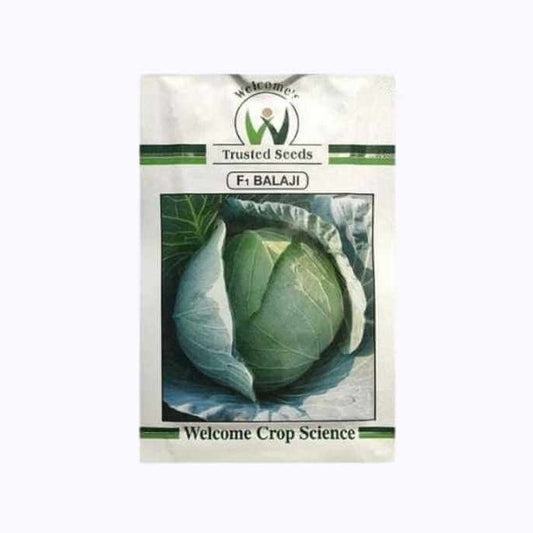 Sold out
Sold out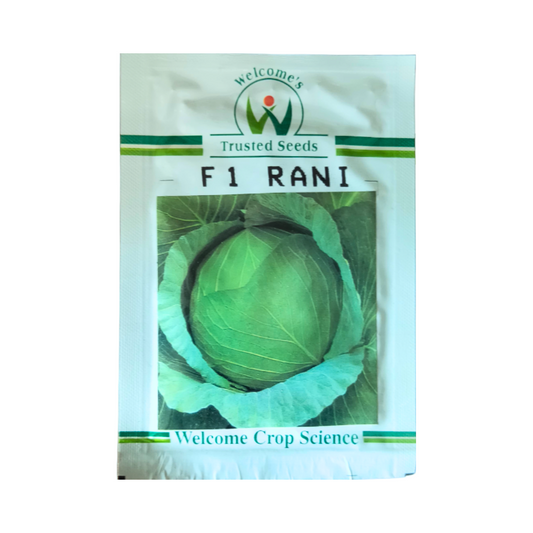 Sold out
Sold out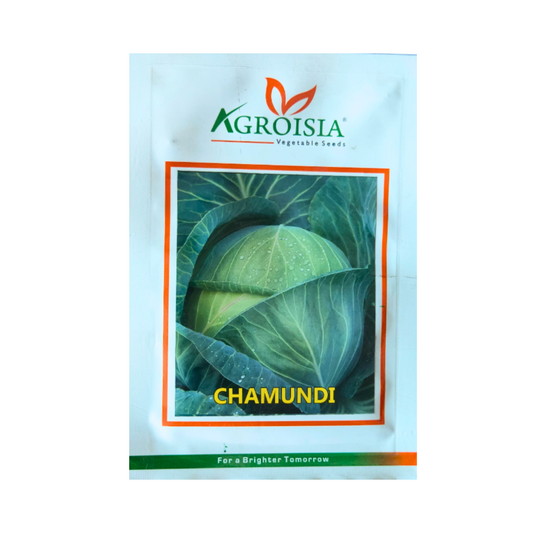 Sold out
Sold out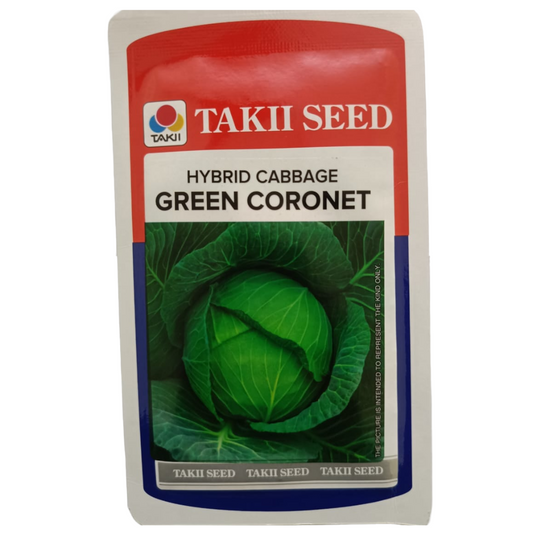 Sold out
Sold out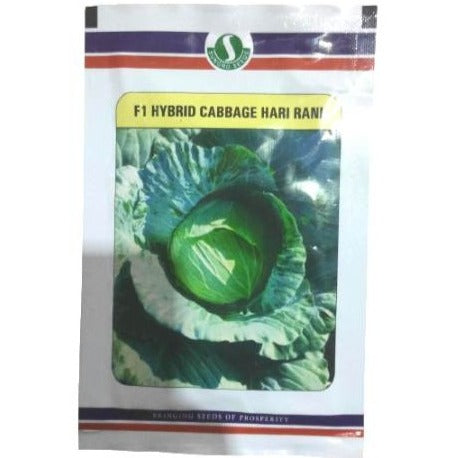 Sold out
Sold out Sold out
Sold out Sold out
Sold out Sold out
Sold out Sold out
Sold out Sold out
Sold out Sold out
Sold out Sold out
Sold out Sold out
Sold out Sold out
Sold out Sold out
Sold out Sold out
Sold out Sold out
Sold out Sold out
Sold out Sold out
Sold out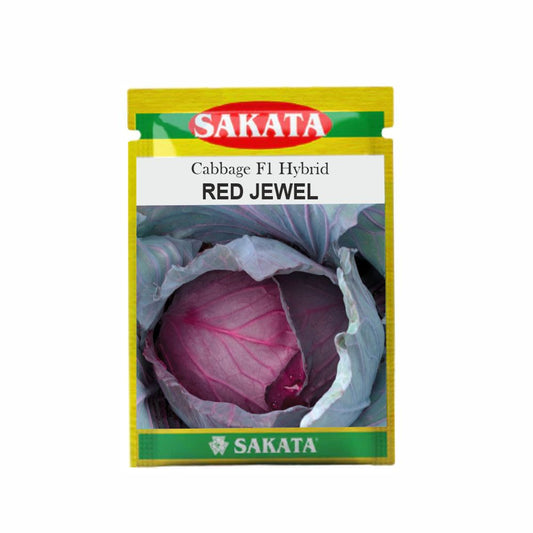 Sold out
Sold out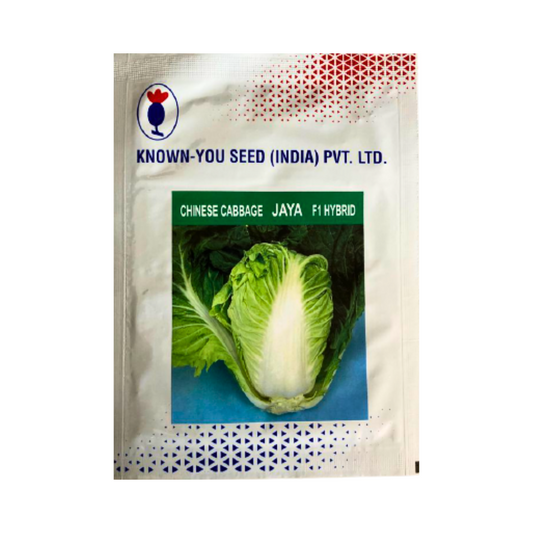 Sold out
Sold out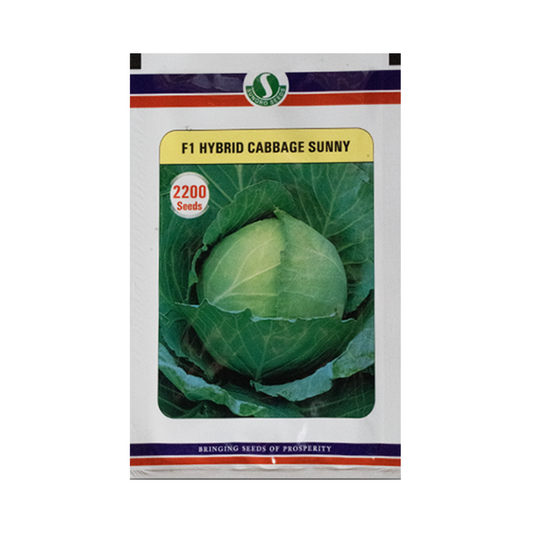 Sold out
Sold out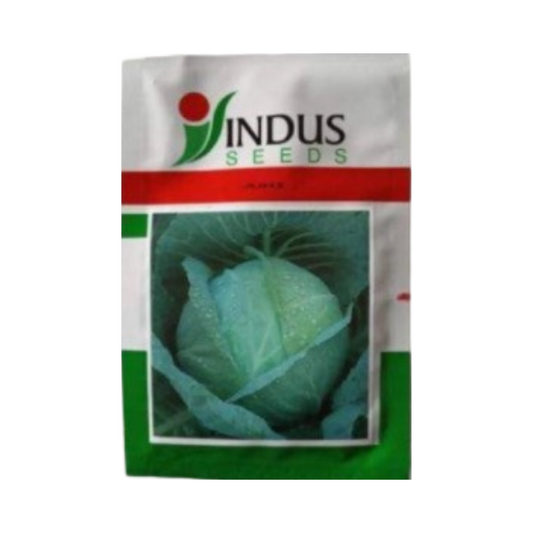 Sold out
Sold out























